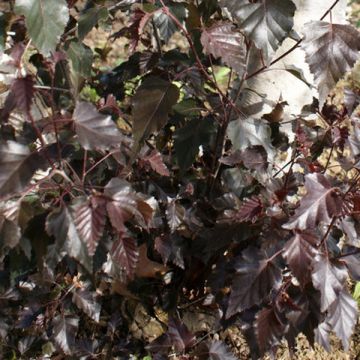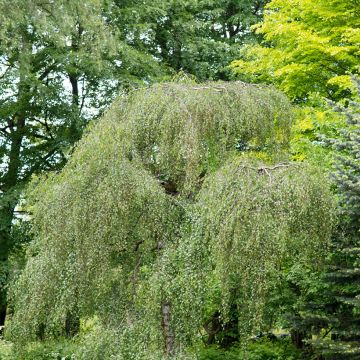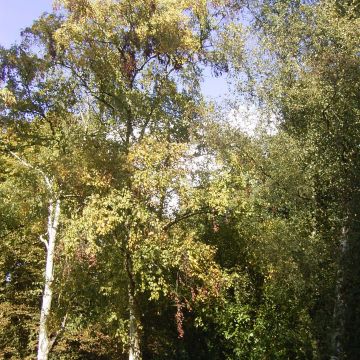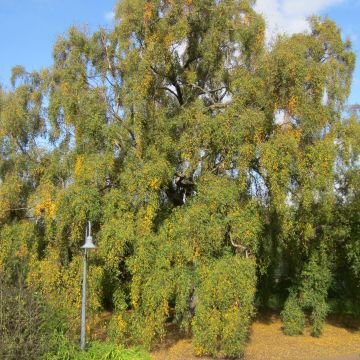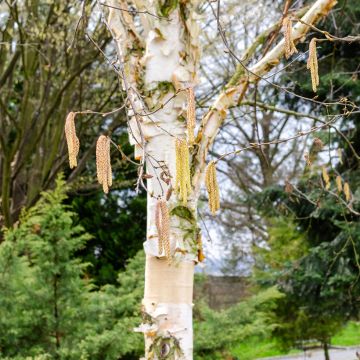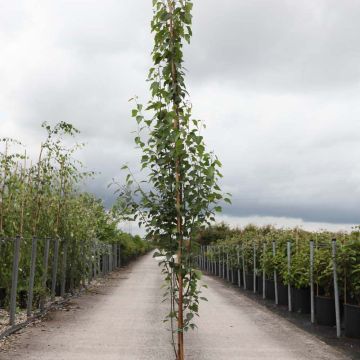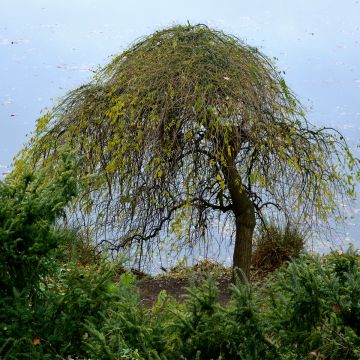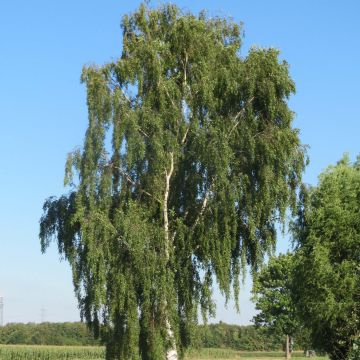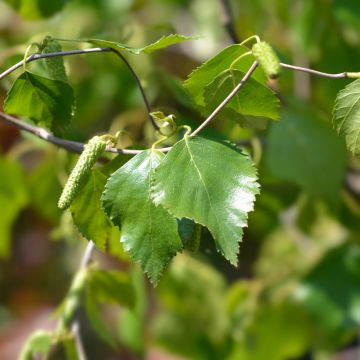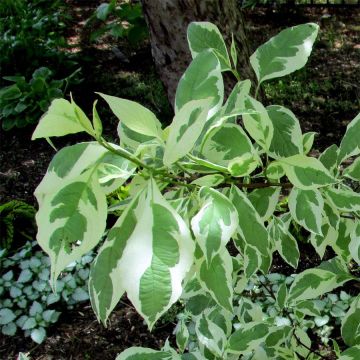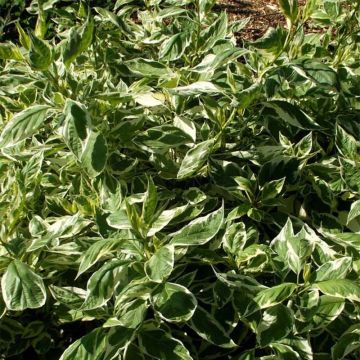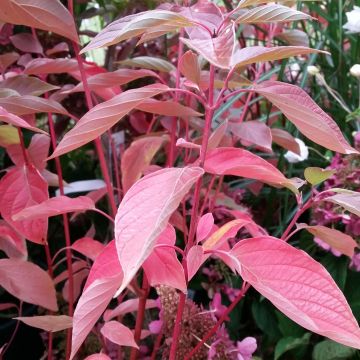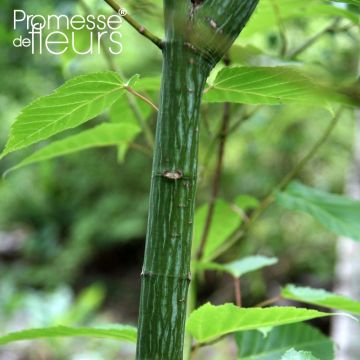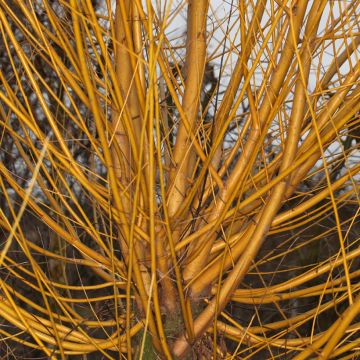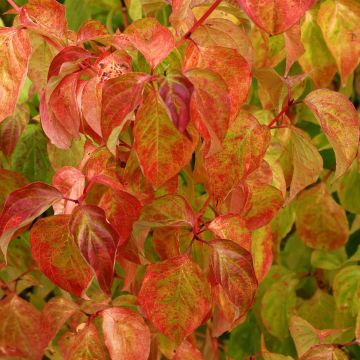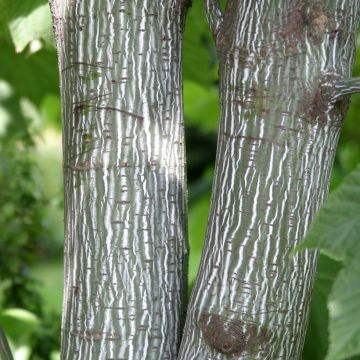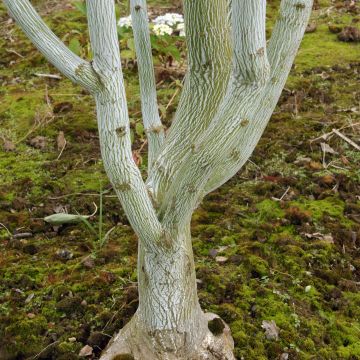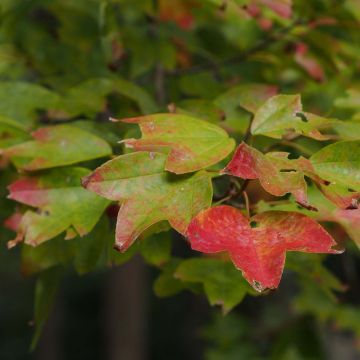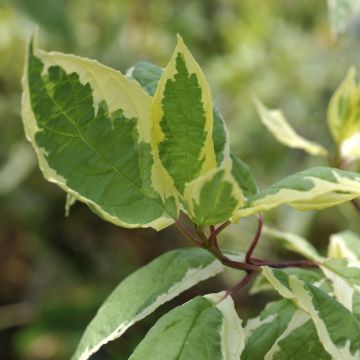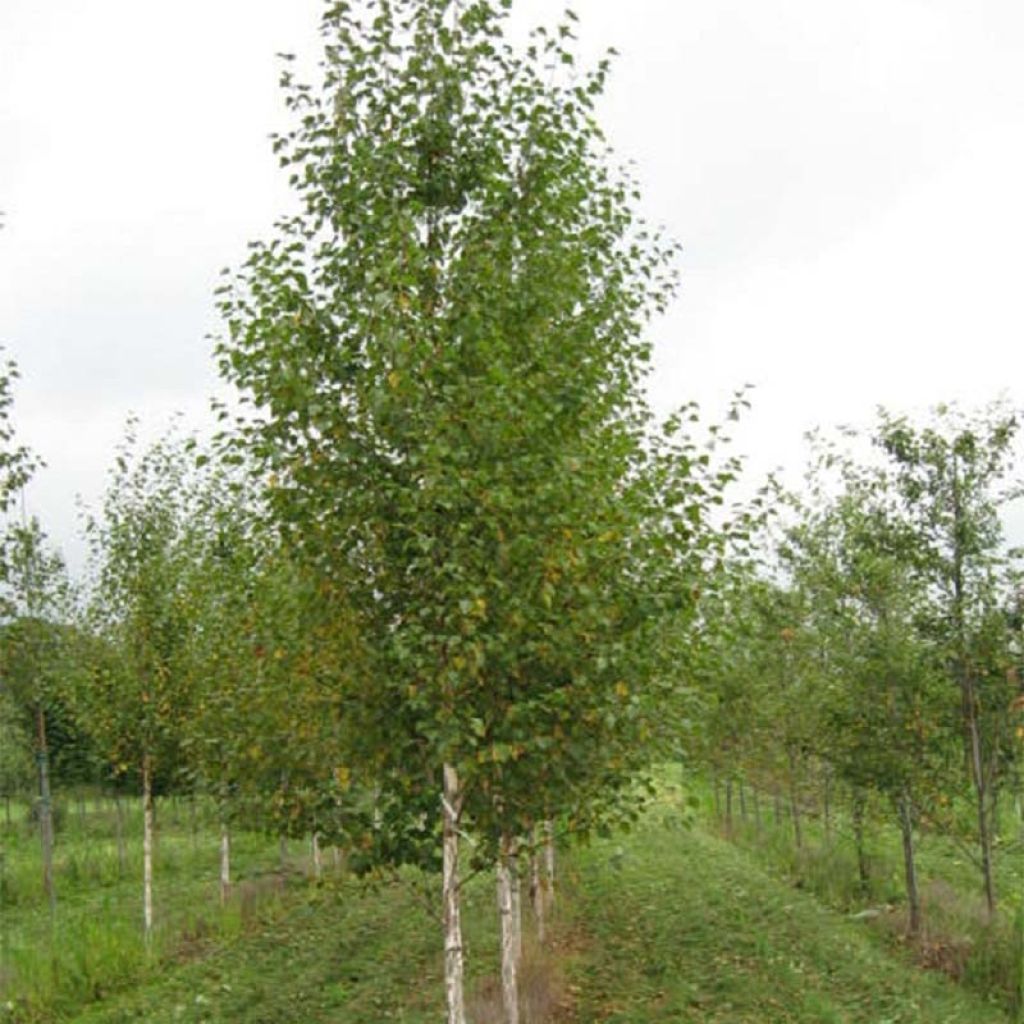

Betula nigra Heritage - Birch
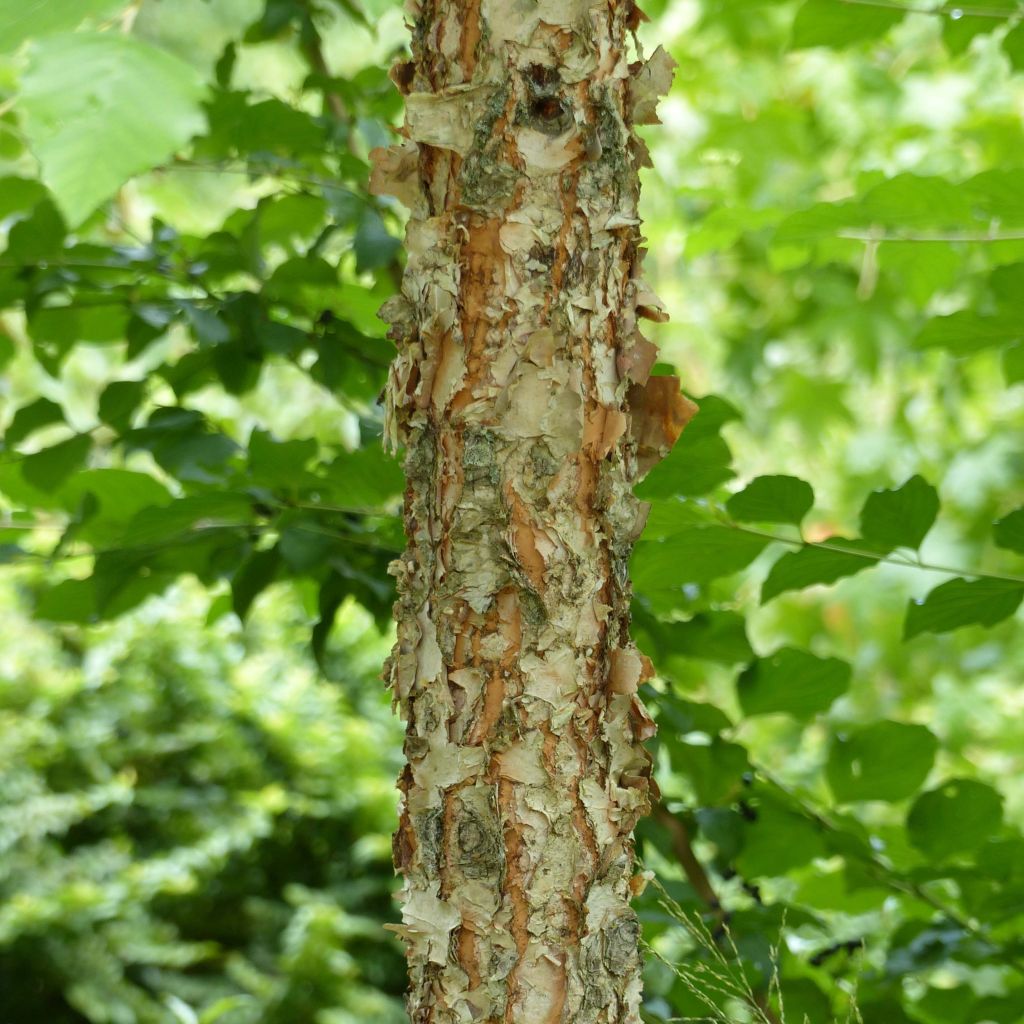

Betula nigra Heritage - Birch
Betula nigra Heritage - Birch
Betula nigra Heritage
Black Birch, River Birch, Water Birch
This item cannot be shipped to the selected country
Oversize package delivery charge from €6.90
More information
Schedule delivery date,
and select date in basket
This plant carries a 24 months recovery warranty
More information
We guarantee the quality of our plants for a full growing cycle, and will replace at our expense any plant that fails to recover under normal climatic and planting conditions.
Oversize package: home delivery by special carrier from €6.90 per order..
Express home delivery from €8.90.

Does this plant fit my garden?
Set up your Plantfit profile →
Description
Betula nigra Heritage is a natural seedling of the American black birch discovered by chance in 1968 in the USA, always valued for the beauty of its bark, its unusual structure, and its lovely autumn foliage. Often growing on multiple trunks, the spreading branches of the canopy become arched with age, and its bark, white and smooth when young, takes on a delightful brown-pink to cream hue over time. It peels off in large curly strips, giving it a rugged look. Highly ornamental throughout the year, it is also a vigorous and fast-growing species, particularly adaptable to different climate and soil conditions and remarkably resistant to diseases and pests. In summary, it is a very beautiful birch tree, and one of the easiest to grow, in both warm and cold climates.
The Black Birch, or Betula nigra, is a deciduous tree native to the warm regions located in southeastern USA, from New Hampshire to Minnesota, Florida, and eastern Texas. In nature, it is found along rivers and swamps, although it can grow in much drier conditions. It is also called River Birch.
The 'Heritage' cultivar gets its other name of 'Cully' from Earl Cully, who discovered it in the wild in the state of Missouri. It is distinctive from the classic type due to its very ornamental appearance, largely thanks to its beautifully coloured bark. This medium-sized tree, reaching a height of 6m (19 ft 8 in) at 10 years and 9m (29 ft 6 in) at maturity, develops rapidly, often from multiple trunks. With age, the tree acquires a wide crown of 6-7m (19 ft 8 in-23 ft), branching out at a height of 3 to 6m (9 ft 10 in to 19 ft 8 in) into several arching branches. The trunks of juvenile specimens are silvery white, until a fairly advanced age. The bark of old trees, with a light brown salmon to cream colour, is grooved at the base and peels off in large strips, revealing the new, very light bark. The young branches are reddish-brown and dotted with dark lenticels. The luxuriant, glossy, triangular leaves are deep green, turning golden yellow in autumn. The leaf blade is bordered by irregular teeth. This 'Heritage' variety flowers early and remarkably abundantly in April-May; it is distinguished by its particularly long male catkins, reaching up to 8 cm (3.1 in) long. It has a shallow root system, composed of secondary roots and numerous rootlets.
The 'Heritage' black birch is a very tolerant plant in terms of soil, as long as it is not too dry or excessively chalky. Its main attraction is its bark, but its imposing shape and medium size are real assets for medium-sized gardens, or even large spaces. As a street tree, it can also be planted in small groups of 3 specimens or in the centre of a flowerbed, surrounded by ground-cover perennials such as lungworts, Trachystemon orientalis, or a carpet of wood anemones. It lends itself to superb combinations with other plants that are particularly striking in winter, such as Cornus with its multicoloured bark or fragrant, winter-flowering Hamamelis and Sarcococca. Its autumn foliage will combine well with that of Nyssa sylvatica in boggy soil or on a pond edge, with deciduous viburnums (Viburnum lantana, V. opulus and its cultivars...) or Parrotia persica in drier and slightly chalky soil.
Report an error about the product description
Betula nigra Heritage - Birch in pictures
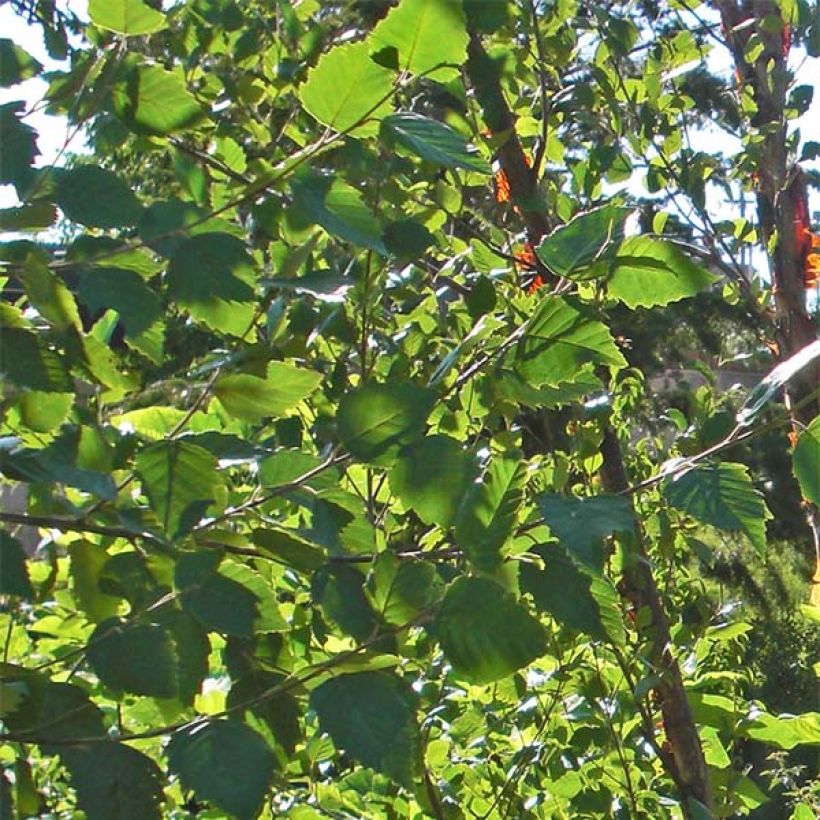



Plant habit
Flowering
Foliage
Safety measures
Botanical data
Betula
nigra
Heritage
Betulaceae
Black Birch, River Birch, Water Birch
Cultivar or hybrid
atteinterespiratoire
Cette plante peut entraîner des symptômes allergiques.
Evitez de la planter si vous ou vos proches souffrez de rhinite saisonnière ("rhume des foins").
Davantage d'informations sur https://plantes-risque.info
Other Betula - Birch tree
Planting and care
Very easy to grow in soil that is not too dry or too chalky, (even clayey, heavy, waterlogged, poorly drained, and marshy soil will do), the black birch requires little maintenance, except for regular watering and the use of mulch in the event of prolonged drought. It should be planted in preferably moist, fertile soil where it will be more beautiful and grow faster, but it will also grow in slightly chalky or sandy soil that is occasionally dry, in the sun or in semi-shade. Pruning is not necessary, and the plant is remarkably resistant to the diseases or parasites that usually attack birch trees.
Planting period
Intended location
Care
-
, onOrder confirmed
Reply from on Promesse de fleurs
Decoratively-wooded shrubs
Haven't found what you were looking for?
Hardiness is the lowest winter temperature a plant can endure without suffering serious damage or even dying. However, hardiness is affected by location (a sheltered area, such as a patio), protection (winter cover) and soil type (hardiness is improved by well-drained soil).

Photo Sharing Terms & Conditions
In order to encourage gardeners to interact and share their experiences, Promesse de fleurs offers various media enabling content to be uploaded onto its Site - in particular via the ‘Photo sharing’ module.
The User agrees to refrain from:
- Posting any content that is illegal, prejudicial, insulting, racist, inciteful to hatred, revisionist, contrary to public decency, that infringes on privacy or on the privacy rights of third parties, in particular the publicity rights of persons and goods, intellectual property rights, or the right to privacy.
- Submitting content on behalf of a third party;
- Impersonate the identity of a third party and/or publish any personal information about a third party;
In general, the User undertakes to refrain from any unethical behaviour.
All Content (in particular text, comments, files, images, photos, videos, creative works, etc.), which may be subject to property or intellectual property rights, image or other private rights, shall remain the property of the User, subject to the limited rights granted by the terms of the licence granted by Promesse de fleurs as stated below. Users are at liberty to publish or not to publish such Content on the Site, notably via the ‘Photo Sharing’ facility, and accept that this Content shall be made public and freely accessible, notably on the Internet.
Users further acknowledge, undertake to have ,and guarantee that they hold all necessary rights and permissions to publish such material on the Site, in particular with regard to the legislation in force pertaining to any privacy, property, intellectual property, image, or contractual rights, or rights of any other nature. By publishing such Content on the Site, Users acknowledge accepting full liability as publishers of the Content within the meaning of the law, and grant Promesse de fleurs, free of charge, an inclusive, worldwide licence for the said Content for the entire duration of its publication, including all reproduction, representation, up/downloading, displaying, performing, transmission, and storage rights.
Users also grant permission for their name to be linked to the Content and accept that this link may not always be made available.
By engaging in posting material, Users consent to their Content becoming automatically accessible on the Internet, in particular on other sites and/or blogs and/or web pages of the Promesse de fleurs site, including in particular social pages and the Promesse de fleurs catalogue.
Users may secure the removal of entrusted content free of charge by issuing a simple request via our contact form.
The flowering period indicated on our website applies to countries and regions located in USDA zone 8 (France, the United Kingdom, Ireland, the Netherlands, etc.)
It will vary according to where you live:
- In zones 9 to 10 (Italy, Spain, Greece, etc.), flowering will occur about 2 to 4 weeks earlier.
- In zones 6 to 7 (Germany, Poland, Slovenia, and lower mountainous regions), flowering will be delayed by 2 to 3 weeks.
- In zone 5 (Central Europe, Scandinavia), blooming will be delayed by 3 to 5 weeks.
In temperate climates, pruning of spring-flowering shrubs (forsythia, spireas, etc.) should be done just after flowering.
Pruning of summer-flowering shrubs (Indian Lilac, Perovskia, etc.) can be done in winter or spring.
In cold regions as well as with frost-sensitive plants, avoid pruning too early when severe frosts may still occur.
The planting period indicated on our website applies to countries and regions located in USDA zone 8 (France, United Kingdom, Ireland, Netherlands).
It will vary according to where you live:
- In Mediterranean zones (Marseille, Madrid, Milan, etc.), autumn and winter are the best planting periods.
- In continental zones (Strasbourg, Munich, Vienna, etc.), delay planting by 2 to 3 weeks in spring and bring it forward by 2 to 4 weeks in autumn.
- In mountainous regions (the Alps, Pyrenees, Carpathians, etc.), it is best to plant in late spring (May-June) or late summer (August-September).
The harvesting period indicated on our website applies to countries and regions in USDA zone 8 (France, England, Ireland, the Netherlands).
In colder areas (Scandinavia, Poland, Austria...) fruit and vegetable harvests are likely to be delayed by 3-4 weeks.
In warmer areas (Italy, Spain, Greece, etc.), harvesting will probably take place earlier, depending on weather conditions.
The sowing periods indicated on our website apply to countries and regions within USDA Zone 8 (France, UK, Ireland, Netherlands).
In colder areas (Scandinavia, Poland, Austria...), delay any outdoor sowing by 3-4 weeks, or sow under glass.
In warmer climes (Italy, Spain, Greece, etc.), bring outdoor sowing forward by a few weeks.

































